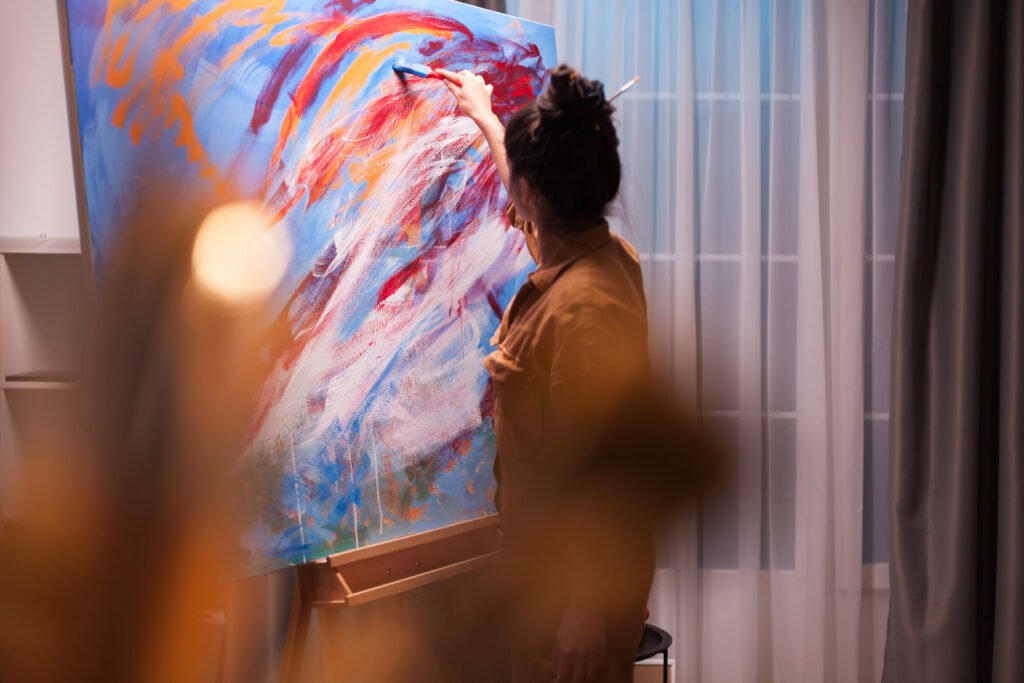Contemporary art and modern art represent distinct moments in art history, each with its own languages, proposals, and ruptures. Although both are associated with innovation, they reflect different ways of seeing the world and positioning themselves within it. Therefore, understanding what separates these two movements is essential to grasp the trajectory of art over the past two centuries.
While modern art emerged from a desire to break with academic traditions and explore new forms of expression, contemporary art goes beyond the search for style. It expands the mediums, questions the very concept of art, and proposes a direct dialogue with current reality.
To the casual observer, the two approaches might seem similar, but their motivations and methods reveal deep and transformative differences.
Modernity in Art: Breaking with the Past and Searching for Style
Modern art began at the end of the 19th century, during a time of intense social, economic, and technological change. The world was undergoing rapid urbanization, industrialization, and cultural shifts. In this context, artists started rejecting classical standards and the conventions of academic art. They wanted to depict the new world using new forms, colors, and ideas.
This period saw the rise of movements like Impressionism, Expressionism, Cubism, Futurism, and Surrealism. Each school had its own language, and many artists sought to create a unique aesthetic capable of translating their inner vision. Although there was a strong intention to break with tradition, there was also a deep attachment to originality and technical mastery. The modern artist believed in artistic progress and in the possibility of defining what art was—or wasn’t.
Moreover, modern artworks were still conceived as autonomous objects, created to be contemplated. Painting, sculpture, and later photography held central roles in museums and galleries. Specialized critics also played a key role in legitimizing works. Even when provocative, modern art still retained a degree of respect for ideas of beauty, innovation, and authorship.
Contemporaneity as Rupture and Multiplicity of Meaning
Contemporary art, which began to take shape in the second half of the 20th century, brought an even more radical change. It is not defined by a style, but by a critical and investigative attitude. Unlike modernism, which still viewed art as a form of representation, contemporaneity embraces the role of questioning, deconstructing, and directly engaging with the present.
This new approach breaks with the notion of the artwork as an object. Installation, performance, video, sound, and interactive environments become tools to provoke sensations, reflections, and experiences. Audience participation—once passive—now takes center stage. In many cases, the viewer’s presence is essential for the work to exist or be complete.

Contemporary art also dissolves the boundaries between creative fields. Fashion, design, music, technology, and even social media are now considered legitimate elements of artistic creation. By addressing urgent themes like identity, gender, politics, memory, and the environment, contemporary art not only reflects the world but aims to transform it.
Another important difference lies in the concept of authorship. While modern art valued the artist as a creative genius, contemporary production often involves collaboration, the appropriation of existing images, and even the use of artificial intelligence or algorithms. This fundamentally changes the relationship between creator, artwork, and audience.
Finally, the place of art has also evolved. Whereas museums once served as the exclusive space for artistic legitimacy, art today circulates through the streets, digital platforms, and alternative venues. This decentralization broadens access and invites more people to engage with artistic production beyond traditional circuits.
In this way, when comparing contemporary art and modern art, it becomes clear that the key difference lies not in materials or techniques, but in how art positions itself in relation to the world. Modernism still sought to construct aesthetic answers. Contemporaneity, by contrast, opens space for questions, tensions, and multiple possibilities.



